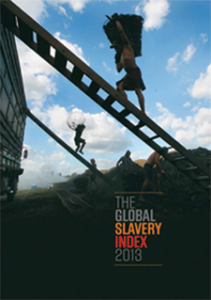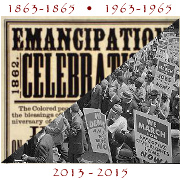Modern slavery and the challenge of seeing our society for what it is
Posted November 7th, 2013 by James DeWolf PerryCategory: Modern issues Tags: Abolition of the Slave Trade, Animal-rights movement, Modern-day slavery
 When I speak with audiences about my family’s prominent role in the transatlantic slave trade, I often suggest that while none of us can change what others did in the past, one response to this history is to consider seriously what future generations may think of us. In particular, I ask people to imagine what what institutions or social realities we take for granted today that our descendants may find it hard to believe we were aware of , and yet chose not to oppose or speak out against.
When I speak with audiences about my family’s prominent role in the transatlantic slave trade, I often suggest that while none of us can change what others did in the past, one response to this history is to consider seriously what future generations may think of us. In particular, I ask people to imagine what what institutions or social realities we take for granted today that our descendants may find it hard to believe we were aware of , and yet chose not to oppose or speak out against.
In a very similar vein, Nicholas Kristof offers this thought to readers of his New York Times column this morning, contrasting the evils depicted in Twelve Years a Slave to modern-day slavery:
I fear that a century from now, someone may put together a movie about slavery in 2013, leading our descendants to shake their heads and ask of us: What were they thinking?
His point is exactly my own: that it is easy, in retrospect, to recognize the horrors of life in an earlier age and to wag a finger at those who acquiesced in oppression then, but much harder to perceive, much less to summon the courage to oppose, similar injustices in the world we take for granted in our own age.
Recognizing injustice in the world around us
When I make this point, I generally suggest to audiences that it is hardest to see injustices that have not yet been widely recognized as such. In other words, our descendants are especially likely to criticize us for practices that are long-established, and that most of us have not yet thought to question.
The obvious historical parallel here, at least in Tracing Center programs on the history and legacy of slavery, is to the anti-slavery movement in the U.S. Until shortly before the Civil War, most white Americans (including most northerners) did not take the anti-slavery movement very seriously, and do not even seem to have questioned, in their own minds, that slavery was a natural and appropriate institution in our society. It was an ancient and pervasive social institution, a fundamental part of the society into which people were born, and doubting slavery probably seemed counter-productive, if it occurred to most people at all.
So I suggest that audience members consider what movements, today, are based on similarly radical ideas, ones that challenge social or economic practices that most of us take for granted. The animal-rights movement is a useful example, especially those parts of the movement which argue that it is morally unacceptable to eat any meat, exploit anything that comes from animals, or even to own pets. This example is useful in part because most audience members consider these to be radical, fringe ideas. Whether these views will come to be widely accepted in our society, and even to be taken for granted by our descendants, isn’t the point. The issue is whether this movement is as radical a fringe movement as abolitionism was for most of its history, and whether the ideas behind the movement are similarly difficult for most people to even take seriously.
The extent of modern slavery
The example that most members of the general public seem to turn to most quickly, however, is that of modern slavery: human trafficking, especially overseas. This is an issue that we talk a lot about at the Tracing Center, and this is the context within which Kristof offered the remark I quoted above.
Kristof bases his column on the release of the first Global Slavery Index by the Walk Free Foundation. This report is an attempt to examine the magnitude of the global slavery problem comprehensively and country-by-country, and to assess government efforts to combat the problem.
The foundation provides a user-friendly online map with which to explore the extent of modern slavery across the globe, but the report is bracing: there are some 30 million people enslaved worldwide at any given time.
The United States does reasonably well compared with many less-developed nations on measures of enslavement, but even so, in the U.S. there are an estimated 60,000 people who are enslaved, even by the fairly cautious methodology of the Global Slavery Index. More troubling, in my view, is the fact that victims of slavery in this country receive relatively little protection or support, or even attention from law enforcement. As Kristof notes, in the U.S., efforts to enforce laws against forced labor (including sexual slavery) generally focus on arresting victims, rather than punishing the perpetrators.
The story of the Walk Free Foundation and the creation of the Global Slavery Index is especially painful, or inspiring, depending on your point of view. It is a story which, to a disturbing degree, mirrors the experience of discovering you are descended from a family deeply enmeshed in the historic slave trade. In Kristof’s words:
The slavery index is the work of Andrew Forrest, an Australian billionaire who was awakened to the issue after his 15-year-old daughter, Grace, worked in an orphanage in Nepal. Grace later revisited the orphanage with her parents to check in on old friends — who were no longer there. They had, it turned out, been sold to brothels abroad.
After returning to Australia, Forrest ordered a review of his mining company’s supply chains to make sure that there was no forced labor. He promptly found that some overseas laborers had had their passports confiscated and had gone unpaid for years.
“With slavery experienced by my family and in my business, it was everywhere if you looked,” he recalls, and he began a campaign against modern slavery.



Leave a Reply